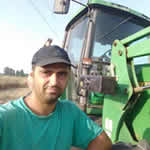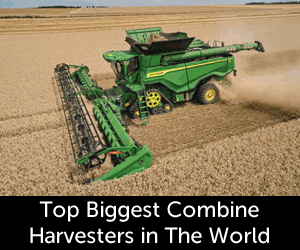The Japanese Black (Kuroge Washu) is one of the four cattle breeds collectively known as Wagyu.
It was officially recognized as a distinct breed by the Japanese government in 1944 and has since been raised under strict regulations set by the Japanese government.
Primarily bred for beef production, this domesticated cattle breed has genetic influences from several European breeds, including Simmental, Ayrshire, Devon, Shorthorn, Braunvieh, and Holstein.
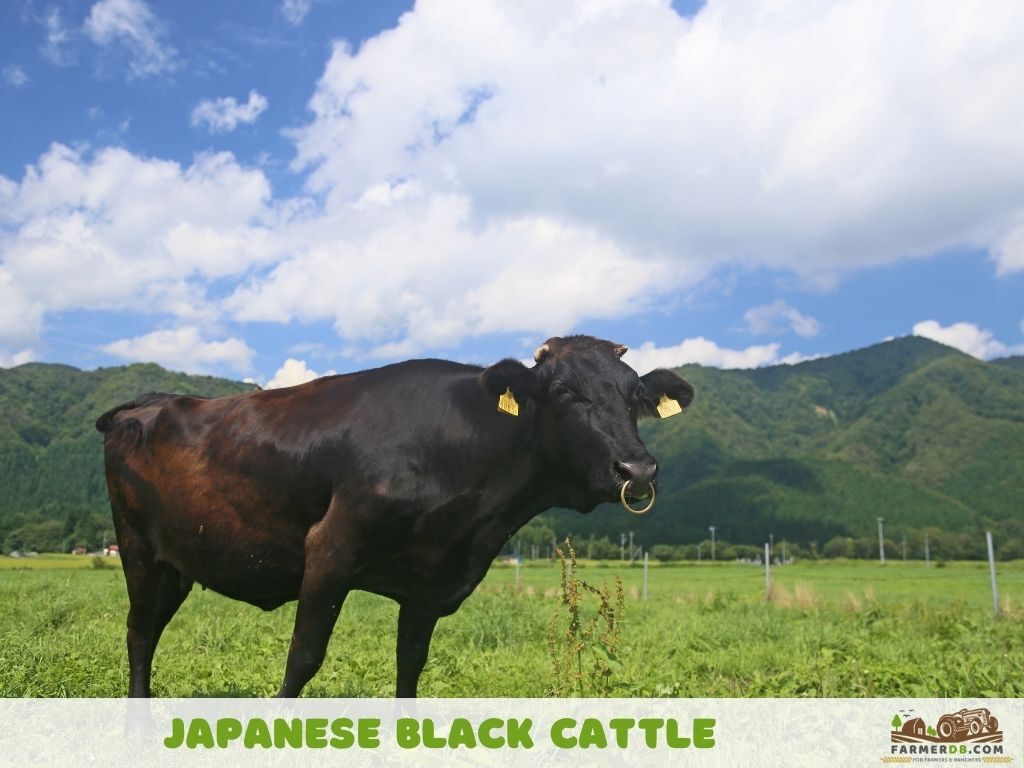
Several key bloodlines have played a significant role in the development of the Japanese Black breed.
The four primary strains are:
- Tajima
- Shimane / Fujiyoshi
- Tottori
- Okayama
The Japanese Black is the most popular of the four Wagyu breeds, with the Tajima bloodline being one of its most influential strains.
Contents
Japanese Black Strains
These strains have all played a vital role in shaping the genetics of modern Japanese Black cattle, with breeders strategically crossing them to enhance marbling, growth performance, and meat quality.
| Strain | Origin | Characteristics | Growth Rate | Popularity |
|---|---|---|---|---|
| Tajima | Hyogo Prefecture | Small frame, fine muscle fibers, high marbling, premium meat quality | Slow | Most popular (used for Kobe beef) |
| Shimane / Fujiyoshi | Shimane Prefecture | Medium to large frame, well-balanced marbling and growth, good maternal traits | Moderate | Popular in breeding programs |
| Tottori (Kedaka) | Tottori Prefecture | Large frame, strong muscling, good meat yield, moderate marbling | Fast | Common in crossbreeding for size and strength |
| Okayama | Okayama Prefecture | Medium frame, balanced meat quality and growth, less marbling | Moderate | Less common than other strains |
Characteristics
Color
These cattle have a solid black color.
Their color can change seasonally and may develop a slight brownish or reddish hue when exposed to the sun.
Head, Eyes, Ears
They have a medium-sized head that, although it looks strong, is also refined. Their muzzle is short to medium in size, and the forehead is broad with a convex shape. The eyes and ears are also small.
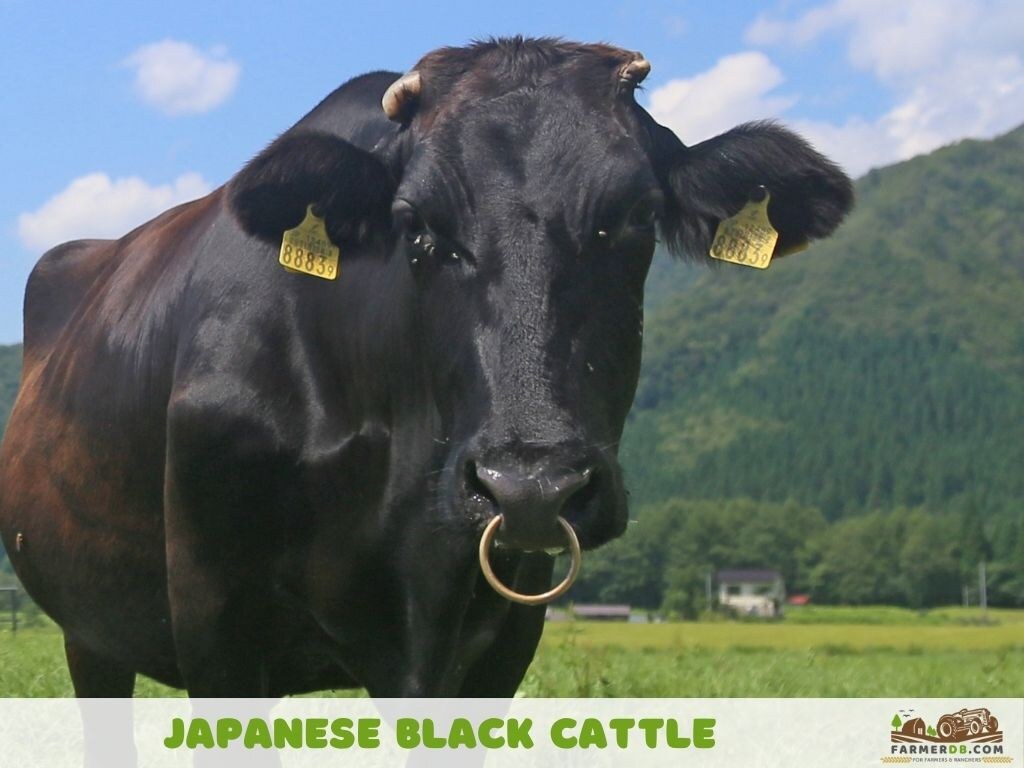
Horns
This breed has horns in both sexes.
The horns are light-colored with dark tips, curved forward and slightly upward.
Even though their horns are small, most breeders choose to dehorn them at a young age to prevent injuries.
Body
The body of these cattle is well-built with good muscle, as they are beef cattle. The back is robust and straight, while the underline is even with no excessive sagging.
Udder
The udder has good suspension and a moderate size. The teats are small to medium and are evenly spaced.
Size
Japanese Black cattle have a medium build, with bulls reaching a shoulder height of 55–59 inches (140–150 cm) and females 49–55 inches (125–140 cm).
Lifespan
These cattle have a long lifespan of around 15 to 20 years.
Yet, only a small number reach old age due to their primary role in beef production.
Growth Rate
How fast do they grow?
The growth rate of Japanese Black cattle is slow to moderate, but it depends on the strain.
For example, the Tajima strain has a slow growth rate, with a metabolism that prioritizes fat deposition over rapid muscle gain.
While genetics play a role in this growth rate, farming techniques also have a major impact, with a longer growth period leading to better marbling in the meat.
Farmers intentionally slow their growth by providing a low-energy, high-fiber diet instead of high-calorie feed designed for rapid weight gain.
Weight
A mature Japanese Black bull can weigh around 1,784 lbs (809 kg), while a female weighs approximately 1,129 lbs (512 kg).
The average birth weight for a male calf is 65–70 lbs (29.5–31.9 kg), and for a female calf, it is 60–64 lbs (27–29 kg). By the time they reach weaning age, around 6 to 7 months, they usually weigh between 440–660 lbs (200–300 kg).
Slaughtered Time
The common slaughter age for Japanese Black cattle is between 30 to 36 months.
The difference between slaughtering this breed and commercial beef breeds is significant but understandable, as a longer growth period results in greater marbling.
At 30 months of age, a Japanese Black steer can weigh 1,520–1,610 lbs (690–730 kg), with an intramuscular fat percentage exceeding 30–35% and a dressing percentage of 60–65%.
Temperament
These cattle do not have temperament issues. They are docile and very easy to manage.
They adapt well to human interaction as well as to other animals, and compared to other cattle breeds, they are not very energetic. While they are curious, they tend to observe rather than actively investigate or make an effort to satisfy their curiosity.
Some individuals may be more sensitive to stress, requiring low-stress handling to maintain optimal meat quality.
Meat
The meat of these cattle is renowned worldwide as the best of the best.
What truly sets it apart is its exceptional marbling. Not only is the marbling more abundant than in any other cattle breed, but it is also uniquely distributed and distinct from the fat found in other breeds.
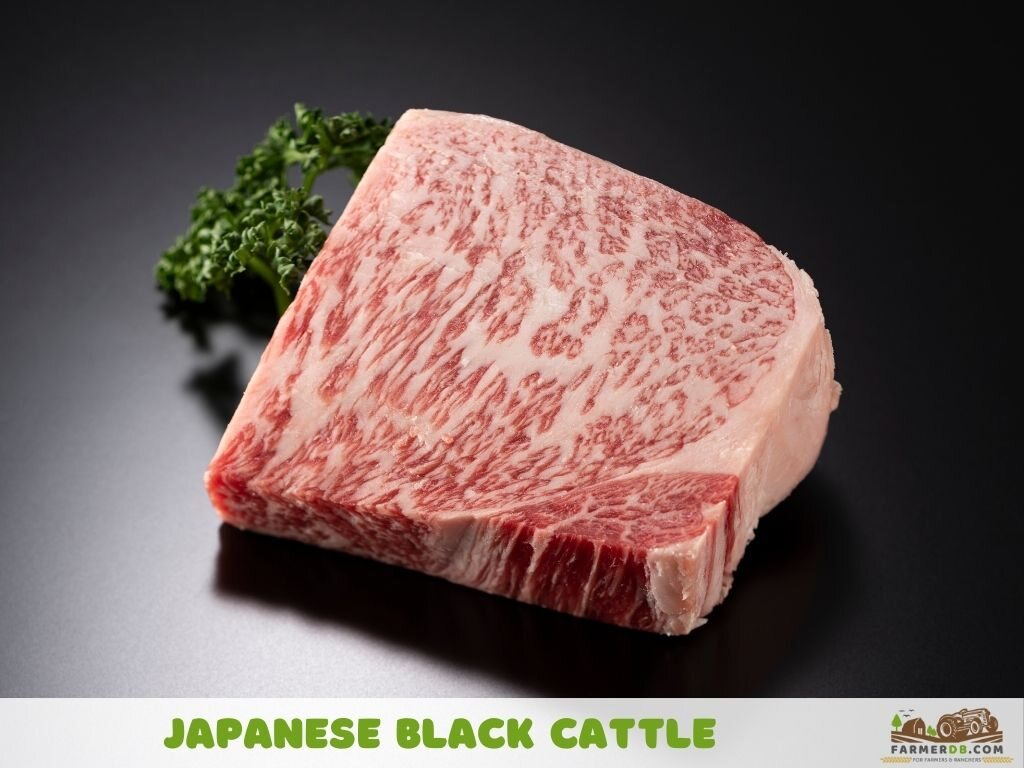
The fat is rich in monounsaturated fatty acids, particularly oleic acid, and has a low melting point of 77–86°F (25–30°C), which is 27–36°F (15–20°C) lower than the fat in other cattle breeds.
This special fat is what gives the meat its unmatched flavor. The taste is often described as sweet with a strong umami profile. Another key factor in its unique flavor is the presence of lactones, complex compounds also found in peaches and coconut.
Thanks to its fine muscle fibers and high-fat content, this meat is softer than regular beef.
Raising
Feeding
The diet of these cattle is not as simple as that of other breeds, as it requires adaptation based on the growth phase and a lot more involvement from the farmer.
While other cattle can simply be left to graze, Japanese Black cattle require careful calculation of macronutrients, including fiber and protein intake, to maximize the final result.
In the early growth phase, up to 12 months, calves require a high-fiber diet to support steady growth and rumen health. The main feeds you can offer include rice straw, hay, silage, and beet pulp. You can start by feeding them 5.5–6.2 lbs (2.5–2.8 kg) per day, gradually increasing the amount as their stomach grows and adapts.
Even after 12 months, adult cattle should continue receiving a fiber-rich diet (roughage) to maintain digestive health. The macronutrient composition should be as follows:
- Fiber: 60 to 70%
- Protein: 10 to 20%
- Carbohydrates and Fats: 10 to 20%
For protein, you can add soybean meal, canola meal, cottonseed meal, corn meal, alfalfa, or fresh grasses.
For carbohydrates, common options include corn, barley, or wheat bran, while for fat, some recommend using grease or vegetable oil.
Another essential component of their diet is vitamins and minerals, which support weight gain and a strong immune system. The most important ones include vitamins A, D, and E, as well as calcium, sodium, phosphorus, iron, salt, magnesium, copper, selenium, zinc, and manganese.
The required amounts of vitamins and minerals depend on the weight, sex, and age of each animal.
These cattle also require unlimited access to a clean, fresh water source at all times.
An example of a daily diet for these cattle includes:
- 45–50% alfalfa hay or fresh grasses
- 25–30% corn or barley
The remaining portion can be a combination of soybean meal or cottonseed meal, along with wheat bran, rice bran, or molasses.
Another common question when raising these cattle is whether they can be successfully raised on a 100% grass-fed diet.
While it is possible to raise Japanese Black cattle on a fully grass-fed diet, the final meat quality will not be the same as traditional grain-fed Wagyu.
| Factor | Grass-Fed Wagyu | Grain-Fed Wagyu (Traditional) |
|---|---|---|
| Marbling | Much lower, leaner meat | High marbling, rich fat distribution |
| Meat Texture | Firmer, slightly chewier | Tender, buttery-soft texture |
| Fat Content | Lower overall fat, more omega-3s | High intramuscular fat (30–35%) |
| Flavor | Rich, beefy, slightly earthy | Mild, buttery, umami-rich |
| Growth Rate | Slower (may take over 36 months) | Controlled, usually 28–36 months |
| Market Value | Lower, due to less marbling | Premium pricing for high marbling |
According to studies (see refs.), a good fattening program can improve the marbling score, the dressing percentage, the rib-eye muscle area, and fat thickness of Japanese Black cattle.
| Key Performance Metrics | Progeny Testing | Good Steer Fattening | Difference |
|---|---|---|---|
| Final Age (days) | 563.2 | 716.5 | 153.3 |
| Final Live Weight (kg) | 500.6 | 621.0 | 120.4 |
| Daily Gain (kg) | 0.85 | 0.79 | -0.06 |
| TDN Consumption per kg Gain (kg) | 6.58 | 8.79 | 2.21 |
| Carcass Weight (kg) | 301.0 | 392.0 | 91.0 |
Environment
The right environment for these cattle is an intensive feedlot system, as a pasture-based environment, while acceptable, will not deliver the same results.
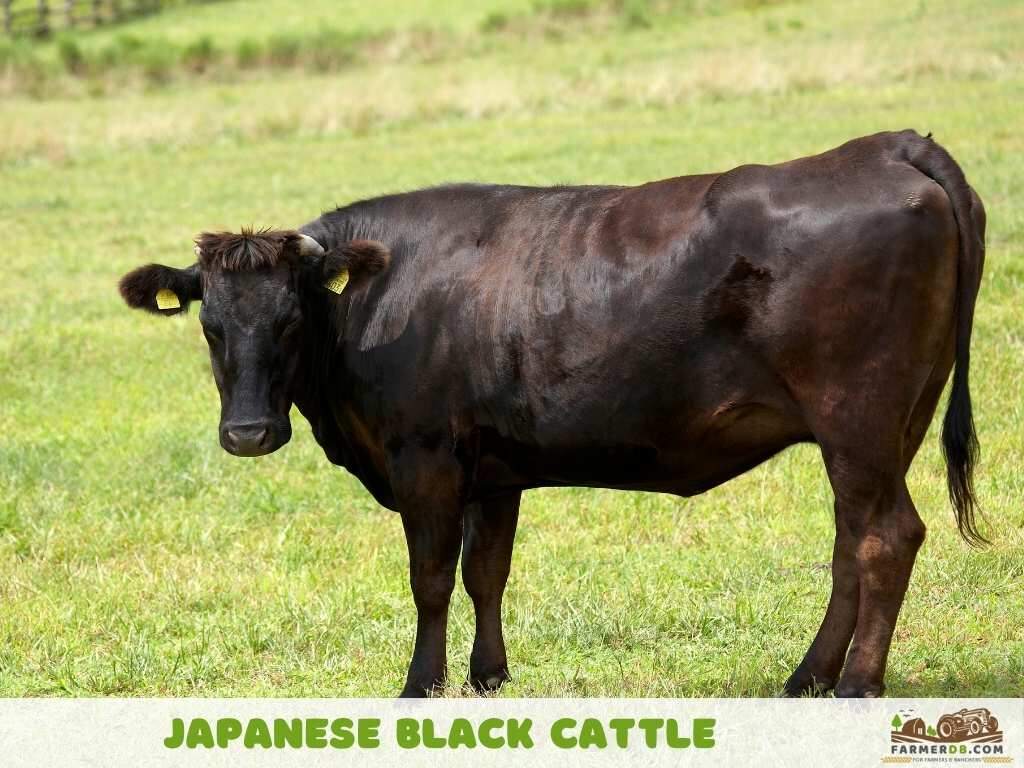
An intensive feedlot system makes more sense because their feed intake is controlled, helping them grow as they should and produce the high-quality meat they are known for. Without this controlled feeding, the final marbling and meat quality will not reach the standards expected from Japanese Black cattle.
Climate and Shelter
Temperate and mild climates are where they develop best, but they can also be raised in other climates with the right setup.
In all climates, they require shelter to protect them from extreme weather conditions. In cold weather, they need a proper shelter with dry bedding and increased feeding to help maintain body weight.
In hot and humid climates, they require shade structures to prevent heat stress, along with cooling systems such as fans or access to water to help regulate their body temperature.
How many cattle per acre?
In a pasture-based system, you need 2 to 4 acres per cattle, while in a semi-intensive system, you need 1 to 2 acres per cattle.
Breeding
Females of this breed can be used for breeding starting at 16–18 months or when they reach a weight of 660–770 lbs (300–350 kg). Bulls reach puberty earlier, around 12–14 months, but they should not be used for breeding until they are at least 18 months old.
Breeding Methods
The most common breeding method for this breed is artificial insemination (AI) using superior bloodlines or embryo transfer (ET) to ensure the best genetic traits. However, if you have a high-quality bull, you can opt for natural breeding, maintaining a breeding ratio of 1 bull per 20 cows.
To get the best offspring, it’s important to carefully choose the top animals in the herd.
Calving and Maternal Abilities
Japanese Black cows usually have their first calf around 27 months and are known for being good mothers. They take great care of their calves, which are born small, making calving smooth and with few complications. Their milk supply is enough to raise their calves, but not as abundant as in other breeds.
If needed, here is a Cattle Gestation Calculator & Calendar
Crossbred
Yes, these cattle can be crossbred with other breeds to improve specific traits such as growth rate, meat yield, and adaptability while still retaining some of their signature marbling.
- Japanese Black × Angus (see refs.): Maintains good marbling while improving carcass size and growth rate.
- Japanese Black × Holstein: Produces lean meat with improved marbling and better feed conversion efficiency.
- Japanese Black × Hereford: Creates a good balance between marbling, size, and adaptability.
Health Issues
Aside from the common diseases that affect cattle, these cattle do not have any specific health or genetic issues.
Advantages
- Best meat on the market
- Good temperament
- High dressing percentage
- Efficient feed conversion
- Calving ease
- Good maternal abilities
- Longer productive lifespan
- Unique genetics
- High consumer demand
- Premium market value
Disadvantages
- Slow growth rate
- High feeding costs
- Higher management requirements
- Heat sensitivity
- Genetic bottleneck: Tajima strain has a narrow gene pool.

